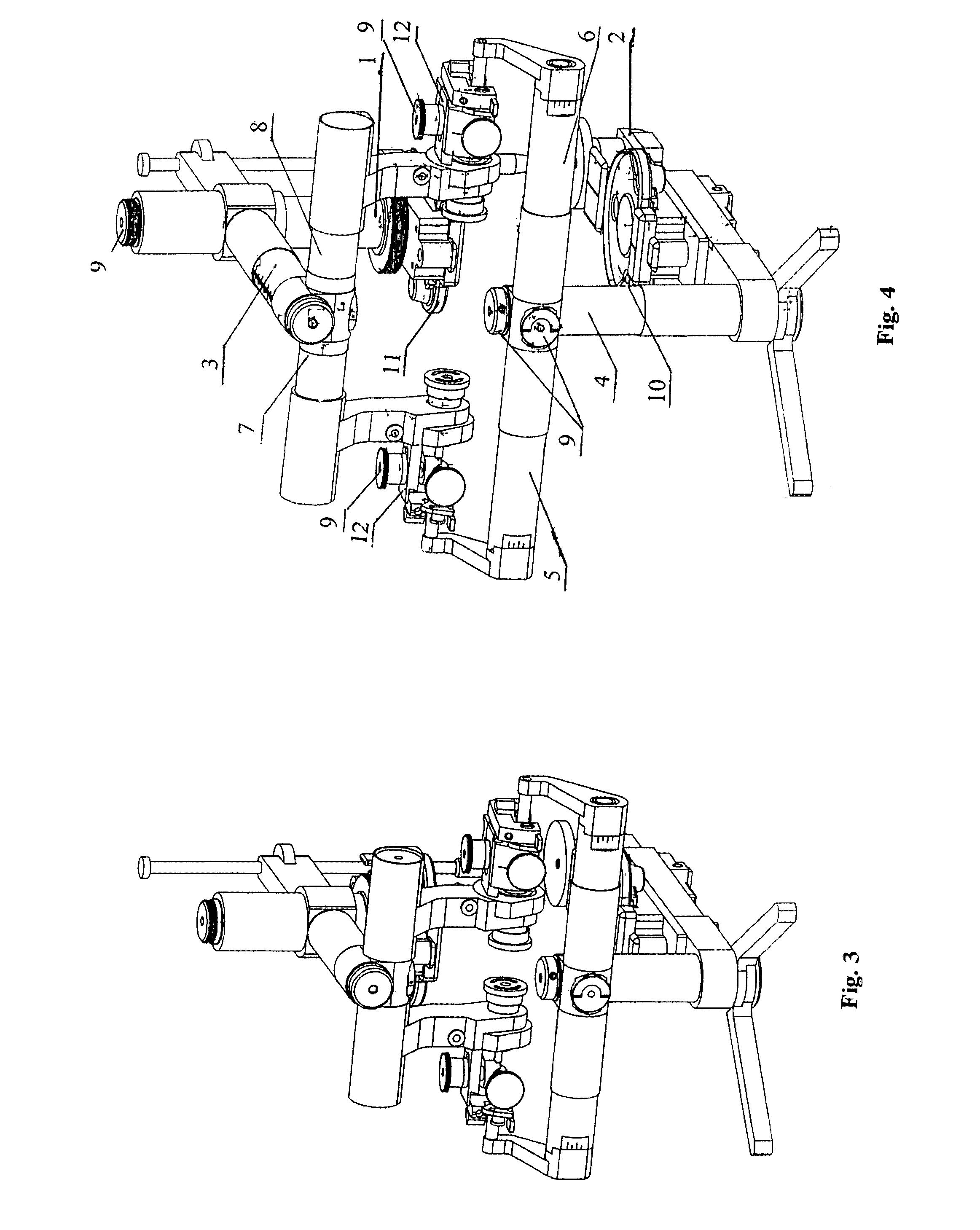Method for articulator adjustment and gnathological instruments for work under this method
a technology of articulator and gnathology, applied in the field of dental medicine, can solve the problems of inability to rotate around the three coordinate axes, inability to accurately reproduce each one, and demerits of articulators, so as to achieve the effect of reducing the material consumption of working models and improving accuracy and reliability at work
- Summary
- Abstract
- Description
- Claims
- Application Information
AI Technical Summary
Benefits of technology
Problems solved by technology
Method used
Image
Examples
Embodiment Construction
OF PERFORMANCE
[0025]The present invention has been demonstrated in the enclosed drawings and visualized with examples below, which serve only for the illustration of steps:
[0026]Step 1. The positioning and fixation with impression material of a special intra-oral tray to the upper jaw for impression into the bite, at which the tray handle (1) and the occlusal plane (OP; FIG. 10 / 1 and OP) must be parallel to the Camper line (FIG. 10 / 2), which connects the middle of the ear tragus and the wing of the nose, as well as marking on the line tragus—ectocanthion (the external angle of the eye, FIG. 10 / 3) of a point over the skin at 13 mm in front of the tragus (FIG. 10 / 4), as well as marking on the tray handle of the incisive point of the upper central incisors (FIG. 10 / CT).
[0027]Step 2. Positioning of the face-bow (FIG. 1) to the tray handle (FIG. 1 / 1) at the upper jaw in a bite with the lower jaw (FIG. 11 / 1). This action is performed, because by means of the face-bow one can make a three-...
PUM
 Login to View More
Login to View More Abstract
Description
Claims
Application Information
 Login to View More
Login to View More - R&D
- Intellectual Property
- Life Sciences
- Materials
- Tech Scout
- Unparalleled Data Quality
- Higher Quality Content
- 60% Fewer Hallucinations
Browse by: Latest US Patents, China's latest patents, Technical Efficacy Thesaurus, Application Domain, Technology Topic, Popular Technical Reports.
© 2025 PatSnap. All rights reserved.Legal|Privacy policy|Modern Slavery Act Transparency Statement|Sitemap|About US| Contact US: help@patsnap.com



